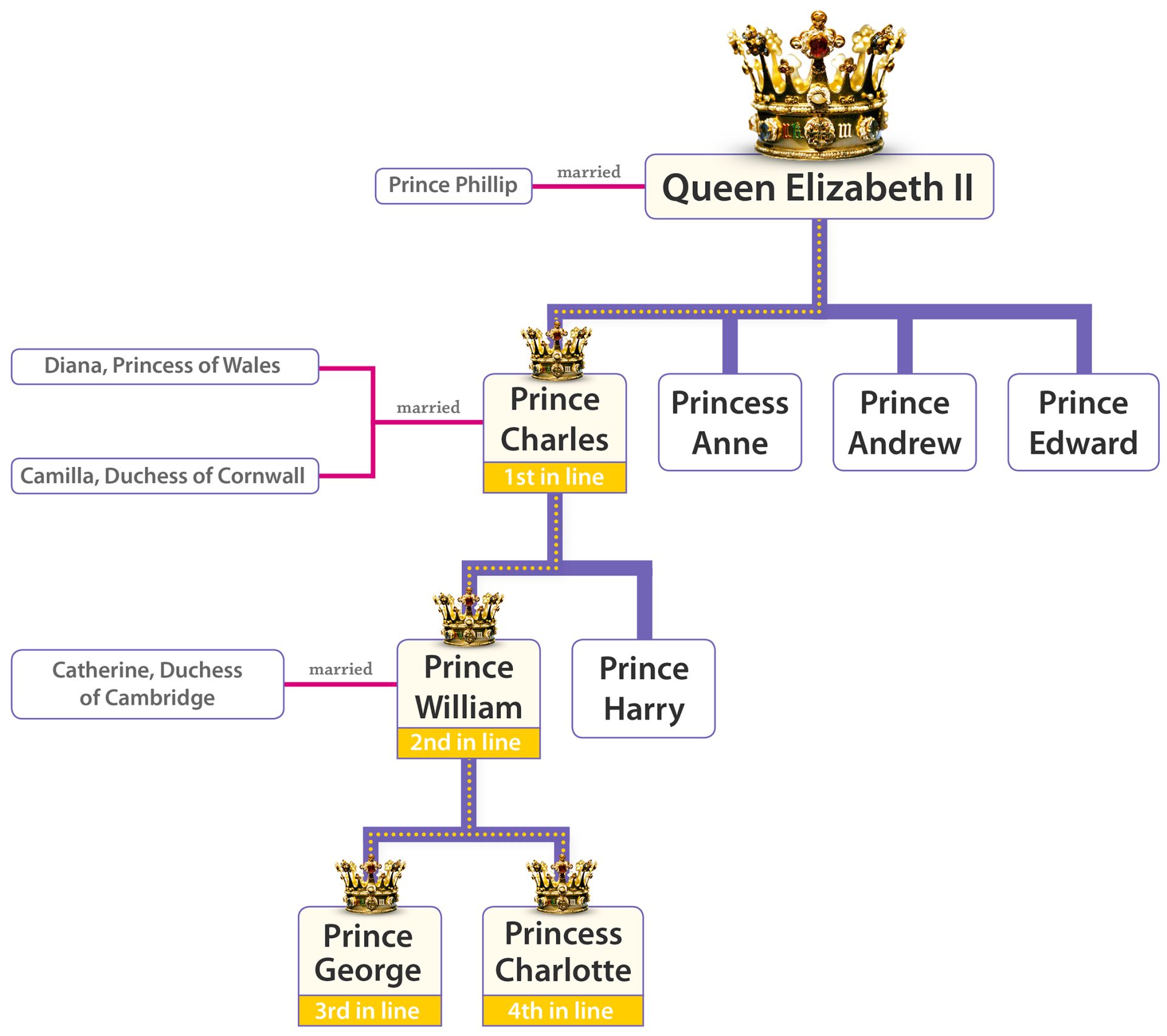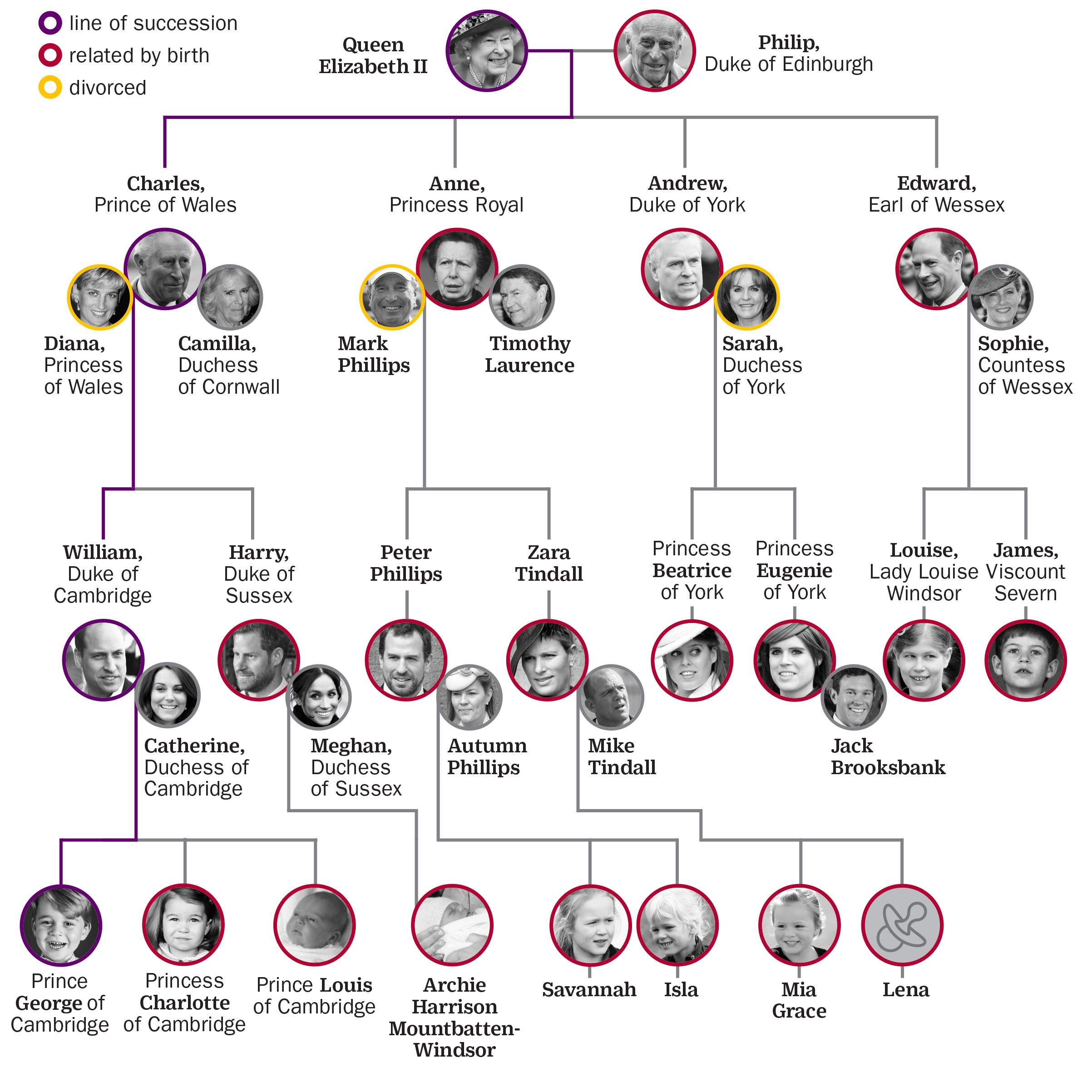Royal Succession: What You Need To Know About The Crown Act
Ever wondered how a royal family decides who gets to be the next king or queen? The rules are complex and steeped in history, but one thing is clear: the Succession to the Crown Act of 2013 significantly reshaped the British royal family's line of succession.
This landmark legislation overturned centuries of tradition, most notably impacting the rights of female heirs. Before 2013, a younger brother would have leapfrogged an older sister in the line of succession. Princess Charlotte, for example, owes her place in line to this act. Had the old rules prevailed, her younger brother, Prince Louis, born in 2018, would have preceded her. The implications of this act extend far beyond individual cases; they represent a fundamental shift in how the monarchy views gender equality.
| Category | Details |
|---|---|
| Act Name | Succession to the Crown Act 2013 |
| Country | United Kingdom |
| Parliament | Parliament of the United Kingdom |
| Agreement | Perth Agreement 2011 |
| Purpose | To modernize and amend the laws of succession to the British throne. |
| Key Changes | Ended male-preference primogeniture; allowed heirs who marry Roman Catholics to remain in line for the throne. |
| Date of Effect | 2013 |
| Impact | Altered the line of succession, ensuring that birth order, not gender, determines the order of succession. |
| Reference Link | Full Text of the Succession to the Crown Act 2013 |
The royal line of succession dictates the order in which members of the British royal family are eligible to inherit the throne. This order is not arbitrary; it's governed by a complex interplay of descent, parliamentary statute, and historical precedent. Typically, children of the reigning monarch are first in line, followed by their descendants. In the absence of children, the succession passes to the nearest blood relative.
- Nanami Kawakami From Av Idol To Documentary Star
- Kirstentoosweet Exposed Leaked Nudes Onlyfans Viral Now
The moment a monarch's reign concludes, whether through death or abdication, the line of succession immediately comes into effect. The next person in line ascends to the throne, ensuring a seamless transition of power. This process is designed to maintain stability and continuity within the monarchy.
The Succession to the Crown Act 2013 (c. 20), formally known as an act of the Parliament of the United Kingdom, amended the laws governing succession to the British throne. This act was a direct result of the 2011 Perth Agreement, an agreement reached by the prime ministers of the sixteen Commonwealth realms.
As of September 2022, with the passing of Queen Elizabeth II, Charles became King Charles III. Prince William is currently next in line, followed by his three children: Prince George, Princess Charlotte, and Prince Louis. This order reflects the modern principles established by the 2013 act.
- Clarkpb01 Onlyfans Does He Show All The Truth Revealed
- Sara Rose Lipert Tre Cools Wife Her Inspiring Story
However, the line of succession hasn't always been so straightforward. Consider the case of Crown Princess Victoria of Sweden. Though the change to abolish male-preference primogeniture took effect in 1980, its application was backdated. This meant that Victoria, born in 1977, became the first in line, replacing her younger brother, Prince Carl Philip, who was born in 1979.
Delving further back into history, the succession to Edward III was governed by his entail to the crown in 1376. Upon his death on 21 June 1377, the line of succession to the English throne was as follows: Richard of Bordeaux, Prince of Wales (born 1367), the only son of Edward III's deceased eldest son, Edward, the Black Prince (born 1330).
It's also worth noting that the rights of earlier generations can be complicated by renunciations and unapproved marriages, which may or may not exclude them from succession. Section 5 of Article 57 addresses situations where abdications, renunciations, or any doubts arise concerning the succession. These matters are to be settled by an organic process, ensuring a fair and legally sound resolution.
The basis for succession was firmly established during the constitutional developments of the seventeenth century, culminating in the Bill of Rights (1689) and the Act of Settlement (1701). These documents laid the groundwork for the modern rules of succession, prioritizing stability and parliamentary approval.
The Succession to the Crown Act 2013 explicitly states that gender shall not be a determining factor in succession. For individuals born after 28 October 2011, their gender, or that of their descendants, does not grant them precedence over any other person, regardless of when they were born. This principle underscores the commitment to gender equality within the monarchy.
The act also addressed the issue of Roman Catholic spouses. It established that an heir could still inherit the throne even if they married a Roman Catholic. Previously, marrying a Catholic would have disqualified an individual from succession. This change reflects a more inclusive and tolerant approach to religious affiliation within the royal family.
Before the Succession to the Crown Act, the rules were significantly different. Male heirs were given preference, regardless of their birth order. This meant that a younger son would always outrank an older daughter in the line of succession. The act effectively dismantled this system, ushering in a new era of gender equality within the monarchy.
The act, codified by Parliament in 2013, modernized the rules for royal succession. It brought the monarchy in line with contemporary values of equality and inclusivity.
The act's impact is evident in the current line of succession. As Prince Charles became King Charles III, the line of succession shifted. Prince William, the Duke of Cambridge (40), is now first in line, followed by his children: Prince George (9), Princess Charlotte (7), and Prince Louis (4). This order reflects the principles established by the act, where birth order trumps gender.
In Spain, the succession to the throne is governed by similar principles. The crown of Spain is inherited by the successors of H.M. Juan Carlos I de Borbon, the legitimate heir of the historic dynasty. Succession follows the regular order of primogeniture and representation, with the earlier preceding the more distant. Within the same degree, the male precedes the female, and for individuals of the same sex, the older takes precedence.
The succession to the throne is regulated not only through descent but also by parliamentary statute, ensuring a legal and constitutional framework for the transfer of power.
The order of succession defines the sequence of members of the royal family in the order they stand to inherit the throne. This order is meticulously maintained and updated to reflect births, deaths, marriages, and other significant events within the royal family.
Like the Crown Estate, the land and assets of the Duchy of Lancaster, a property portfolio valued at 383 million in 2011, are held in trust, providing income to the reigning monarch.
The Succession to the Crown Act 2013 represents a significant milestone in the evolution of the British monarchy. It reflects a commitment to fairness, equality, and inclusivity, ensuring that the line of succession is determined by merit and birth order, rather than outdated patriarchal traditions.
For a more detailed understanding of the British royal family tree and line of succession, numerous resources are available. The BBC website offers a graphic representation of the family tree and line of succession, providing a visual guide to the complex relationships within the royal family.
Biographies of the Queen's descendants, arranged in order of their place in the line of succession, can provide insights into the lives and roles of those who may one day inherit the throne.
Furthermore, it is possible to trace the British line of succession on any date back to 1820, offering a historical perspective on the ever-changing dynamics of the royal family.
The story of the Succession to the Crown Act is not just a tale of legal reform; it's a narrative of societal progress and evolving values. It demonstrates how even the most ancient institutions can adapt to reflect the changing needs and expectations of a modern world.
The new company structure comes after almost a decade of talks and family planning by the Crowns. This highlights the importance of long-term planning and adaptation within family-owned businesses and organizations.
The order of succession is the sequence of members of the royal family in the order in which they stand in line to the throne. This is a concept applicable not just to monarchies but also to other organizations and institutions where leadership succession is a critical element.
The basis for the succession was determined in the constitutional developments of the seventeenth century, which culminated in the bill of rights (1689) and the act of settlement (1701). These historical documents provide the foundation for the modern understanding of succession and governance.
The succession to the crown act 2013. Succession to the crown not to depend on gender in determining the succession to the crown, the gender of a person born after 28 october 2011 does not give that person, or that person's descendants, precedence over any other person (whenever born).
This also includes England, Scotland and Wales, all part of the United Kingdom as well as the French Norman invasion. For a simplified view, see: Family tree of British monarchs.
Once upon a time, boys outranked girls in the line of succession (yep, even if the girl was older), but that all changed in 2013 with the succession to the crown act. Now, it's all about the order of birth, regardless of whether youre a prince or a princess.
Bright star's connection to crown is the support it gets from the university of chicago's crown family school of social work, policy & practice, the beneficiary of a $75 million gift three years.
An overview of the british royal family's line of succession, its history, and changes over time.
As prince charles becomes king charles iii, the line of succession for the british crown is: Prince william, the duke of cambridge (40) prince george (9) princess charlotte (7) prince louis (4.
Now, it's crown's own firm, the family held henry crown & co., that will turn to a successor ceo after crown's death this week in a racetrack accident in colorado. Crown had been chairman and ceo.



Detail Author:
- Name : Gavin Borer
- Username : kunze.moses
- Email : athena.lueilwitz@friesen.com
- Birthdate : 1977-08-27
- Address : 3480 Greenfelder Mills Cotyhaven, UT 54884
- Phone : +1.989.867.3979
- Company : Marquardt-Lind
- Job : Physician
- Bio : Mollitia qui voluptatem ut voluptatem quod quia. Dolorem vel aut error nostrum ducimus omnis. Iusto quasi officiis doloremque id molestiae.
Socials
twitter:
- url : https://twitter.com/frami2015
- username : frami2015
- bio : Cumque non quis aut iusto. Vitae et quis dolores rerum facere. Optio architecto provident officia doloribus ullam.
- followers : 2187
- following : 94
instagram:
- url : https://instagram.com/rframi
- username : rframi
- bio : Fugiat reprehenderit illo quis. Ut occaecati accusantium voluptate voluptatem.
- followers : 4609
- following : 2712
facebook:
- url : https://facebook.com/rowan.frami
- username : rowan.frami
- bio : Quod voluptas voluptatem molestiae nemo.
- followers : 1030
- following : 456
tiktok:
- url : https://tiktok.com/@frami2012
- username : frami2012
- bio : Dolor quidem et architecto impedit voluptas enim in facilis.
- followers : 170
- following : 238